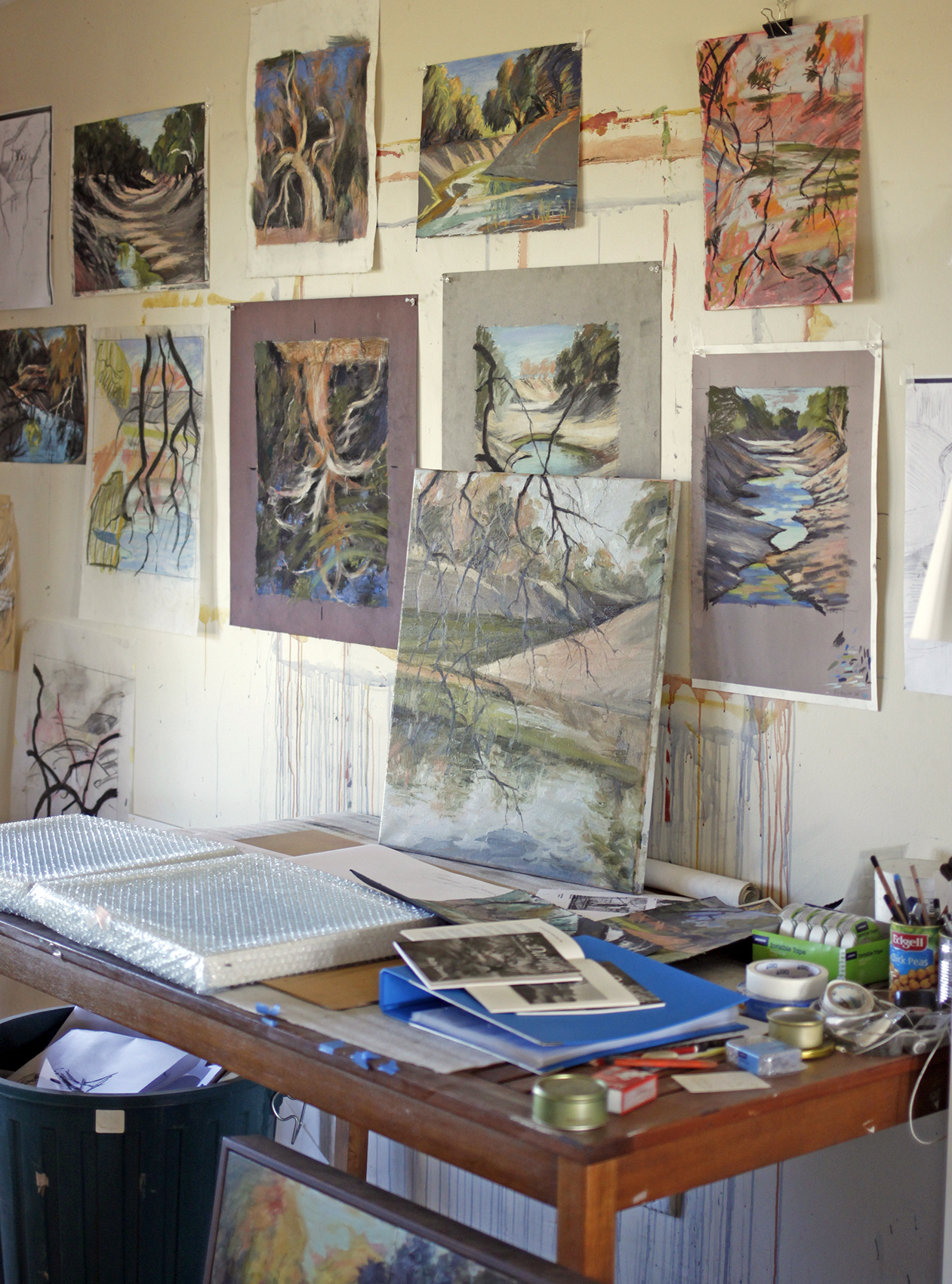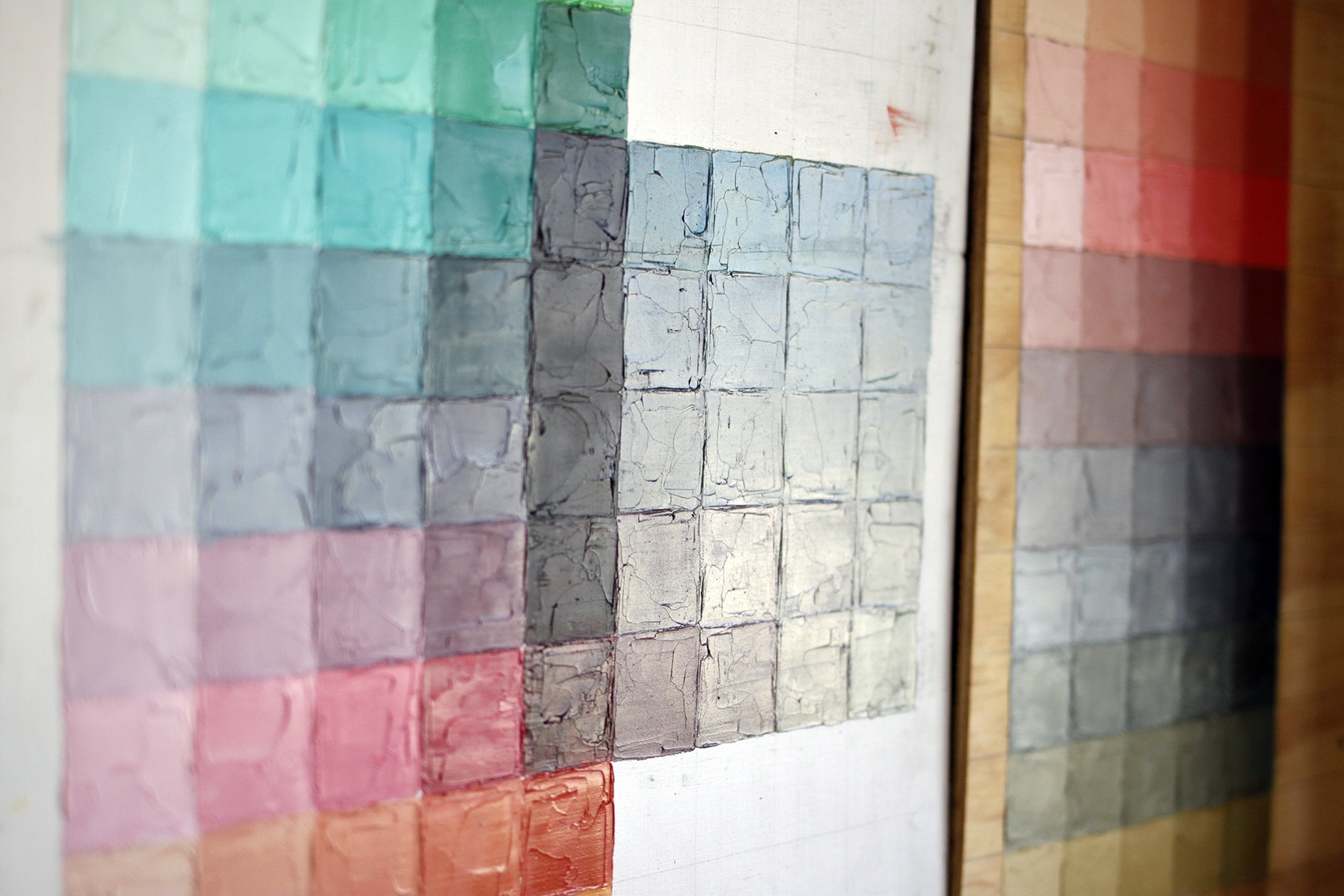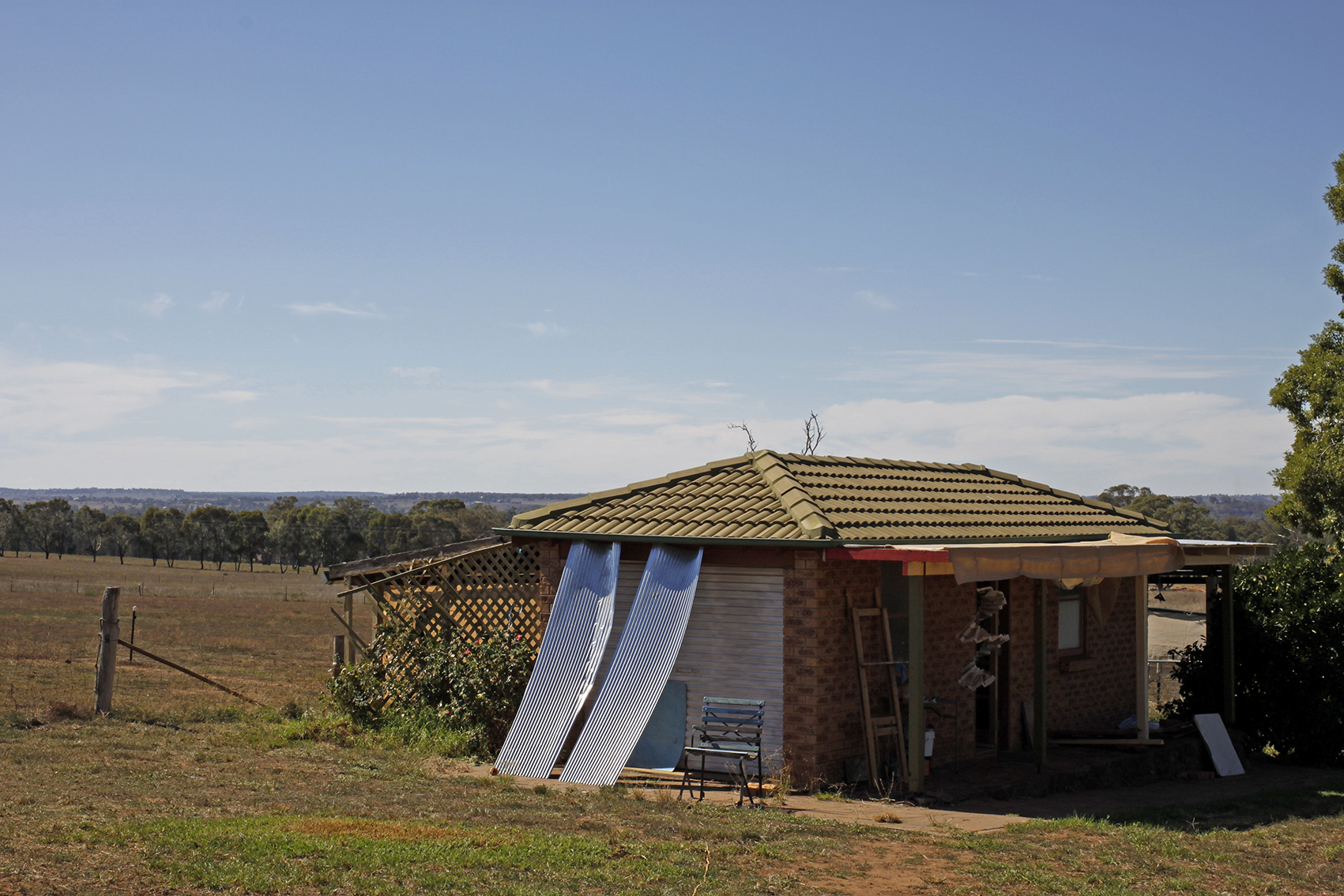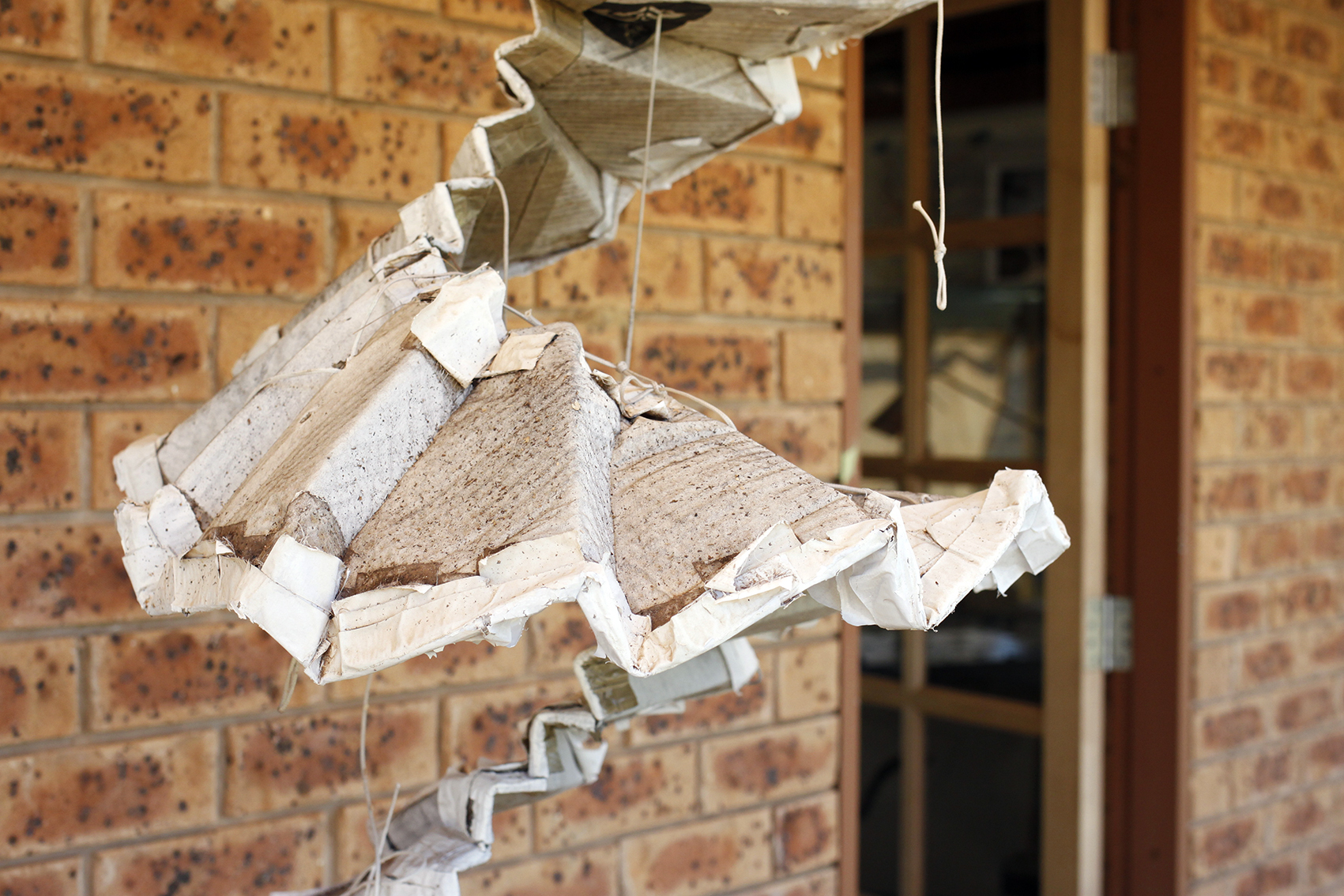Studio Visit with Ruby Davies
The Corner Store Gallery - Studio Visit with Ruby Davies
Studio Visit with Ruby Davies
Ruby Davies lives on a property just outside of Dubbo in Central NSW. We’re in the middle of a drought and the land is parched. Red dust covers the studio where where Ruby paints at the back of her property. The pool lies empty, and the garden is struggling to survive.
The effects of the drought are impossible to escape, and it’s the drought which has become a central theme of Ruby’s most recent body of work Sold Down the River: Recent Paintings of the Darling Barka. This extensive series of paintings captures perfectly a uniquely Australian colour pallette. Stretches of almost empty river beds are depicted in varying states of life and decay, with the most recent work heading further and further into muted pinks and rich shades of burnt sienna. It is not the first time this subject has been explored by Ruby. She has created work based on the Darling Barka for many years with several pinhole photographs now part of the National Gallery of Australia’s permanent collection. Ruby’s father also captured the river system in many of his watercolour paintings. It is clear that this subject is close to her heart.
Sold Down the River opens to the public as well as online at 10am on Wednesday May 1st and will be on display until Saturday May 18th. The Official Launch will be held on Friday May 3rd from 6pm. Ruby will be in the gallery every Saturday until the close of the exhibition if you’d like to meet the artist.
The Corner Store Gallery - studio visit with Ruby Davies
Tell us a little about your background, How long have you been making art?
I’ve been interested in artmaking since I was young, drawing and colour my main fascinations. After school I was persuaded to do a more ‘useful’ degree but swerved back to studying art at the National Art School and later Sydney College of the Arts/USYD where I eventually completed a Master’s degree. They were exciting times; expanding concepts and investigating various media, surrounded by other artists exploring arts many trajectories.
Where do you find inspiration?
I find inspiration primarily I guess in colour and concepts. As an artist who worked with photography in the past I’m drawn to paintings which lead you into a three dimensional space. On the other hand, I aim for the textures and gestures of paint to break up the image the closer you are to the work.
The Corner Store Gallery - studio visit with Ruby Davies
Why are you so drawn to the Darling Barka? Why is this subject so important to you?
I was born at Wilcannia and grew up on the Darling Barka. I continue to visit family with grazing properties bordering the river - so the connections run deep. For me the river and the landscape beyond it are powerful places. There’s a stark beauty and a wildness, a poetic sublime about this country. The river gums dwarf the human scale and the red, open country overwhelms with its vast expanse.
Cutting across this beauty and power are recent agricultural technologies that tragically threaten to destroy this landscape. Anyone who follows the news has seen the massive pumps extracting water, dams across rivers and river water privatised in enormous off-river storages. This (river) water and vast tracts of laser-graded land have become the raw materials of global agribusinesses - vast outdoor factories supplying world markets. Their bottom line appears to increasingly involve the destruction of river ecosystems.
Indigenous connections to this landscape are strong and all along the river I see artifacts; an Aboriginal presence in fires, shield and canoe trees, pieces of flint and grinding stones and on high banks with vantage points up and down the river there are often large scatterings of muscle shells. Aboriginal occupation is in stark contrast to European land concepts that have all but destroyed the river in 30 years of industrial scale agriculture.
The Corner Store Gallery - studio visit with Ruby Davies
Describe your process to our readers.
Part of my process is spending time walking, drawing and painting in the landscape, seeing colours and effects of light in different seasons and times of day. Bigger works are painted in my studio. With these works I’m making images with a sense of the real - in time and space. Viewed from closer up I would like the gestures and textures of paint to emerge - flicks of paint, lines, gestures, various brush marks. I want to show the beauty and power of this river. I want it to survive.
What’s next for you?
More paint, more colour, discussions about exhibitions … have to wait and see!!
The Corner Store Gallery - studio visit with Ruby Davies
The Corner Store Gallery - studio visit with Ruby Davies
The Corner Store Gallery - studio visit with Ruby Davies
The Corner Store Gallery - studio visit with Ruby Davies
The Corner Store Gallery - studio visit with Ruby Davies
The Corner Store Gallery - studio visit with Ruby Davies


















